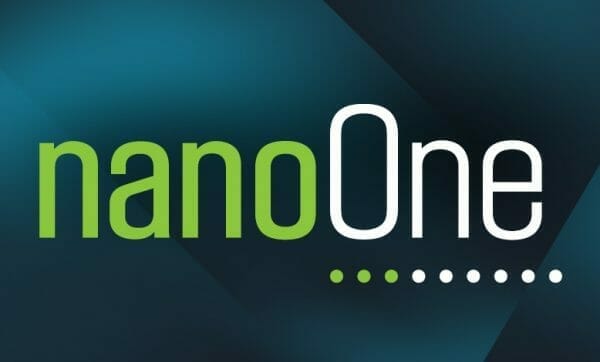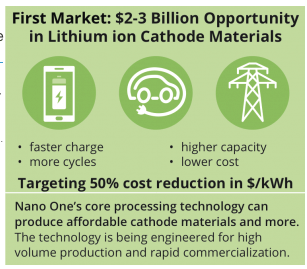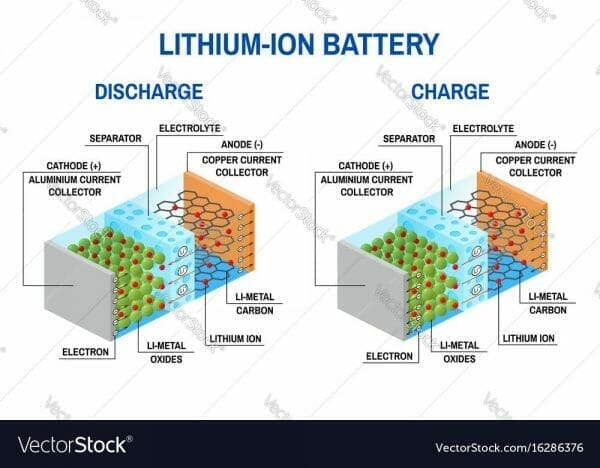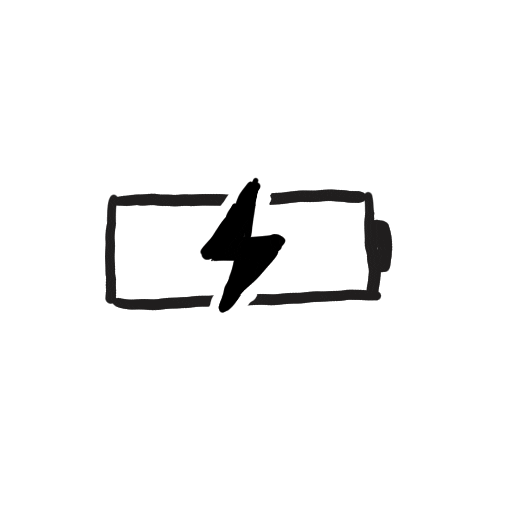On May 7, 2019 Nano One Materials (NNO.V) announced the issuance of U.S. Patent #10,283,763 .
This patent brings their U.S. patents to six and their international total of patents to 13.
This patent adds more definition to the Nano One unique process for making nanostructured precursors for lithium ion battery cathode materials.
Precursors are intermediate mixtures of metals such as nickel, cobalt and manganese prepared in advance of high temperature processing in a furnace.
Equity.Guru’s own Lukas Kane wrote about nanostructured precursors on March 14, 2019.
Nano One’s patented process:
- adds lithium to the precursors in an intimate mixture
- avoids the need to grind and mill
- shorten thermal process times
- simplify manufacturing
- enable alternative feedstocks
The process is different from other cathode manufacturing methods because it provides homogeneous mixtures of lithium, nickel, cobalt and other metal ions prior to thermal processing.
The process also shortens time spent in the furnace, improves crystallinity, enables alternative feedstocks and can reduce contamination.
Nano One’s patent allows companies to capitalize on a new generation of cathode materials and a scalable approach for lower cost, safer and longer lasting lithium-ion batteries. A few examples include lithium iron phosphate (LFP), which could be used for e-buses, storage and mass market electric vehicles.
Nano is also using its intellectual property portfolio to pursue nickel manganese cobalt oxide (NMC) for long-range electric vehicles and high-voltage spinel (HVS) for next-generation solid state lithium ion batteries.
“We are continually innovating and file for patent protection, covering processes, materials and batteries with many patents still pending globally, including Europe. As interest in electrode technologies escalates globally, we are well positioned to execute our business and intellectual property strategies,” said Dr. Stephen Campbell, chief technology officer.
According to Wise Guy Reports, the 2017 worldwide lithium-ion cathode market was about $5.1 billion – and is expected to reach $58.8 billion by 2024.
Nano One’s patent portfolio includes IP in China, Taiwan, Japan, Korea, U.S. and Canada.
Other market players have started to sit up and take note.
“Saint Gobain, one of the largest multinationals in Europe, put its name and logo to a Nano One Materials news release announcing the firms will begin working together, wrote Equity Guru’s Chris Parry on December 18, 2018, “If you’ve been watching Nano One from the sidelines, this is big news.”
Also, on January 21, 2019, NNO announced that it has entered into a Joint Development Agreement with Pulead Technology Industry.
The collaboration between Nano One and Pulead began in 2018 with “visits, battery testing and economic evaluation.”
Like the Saint Gobain deal, the objective here is to “develop, evaluate and optimize scaled up production of lithium iron phosphate (LFP) cathode materials using Nano One’s technology, for use in lithium ion batteries.”
Driven by lower costs, higher performance and emerging markets, the global demand for LFP is projected to grow from 100,000 metric tonnes in 2017 to 130,000 tonnes in 2020 and over 200,000 tonnes in 2025, according to a BMO study.
Nano One shares rose $0.03 to close at $1.33 today.
The company presently has 66,379,202 shares issued and outstanding with a market cap of $86.2 million.
—Joseph Morton





